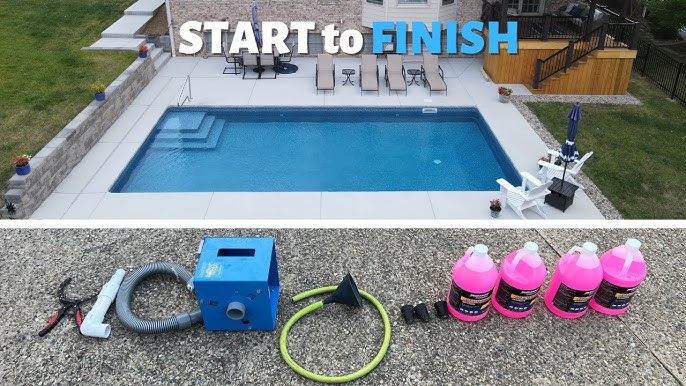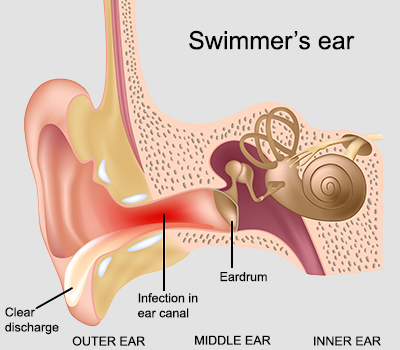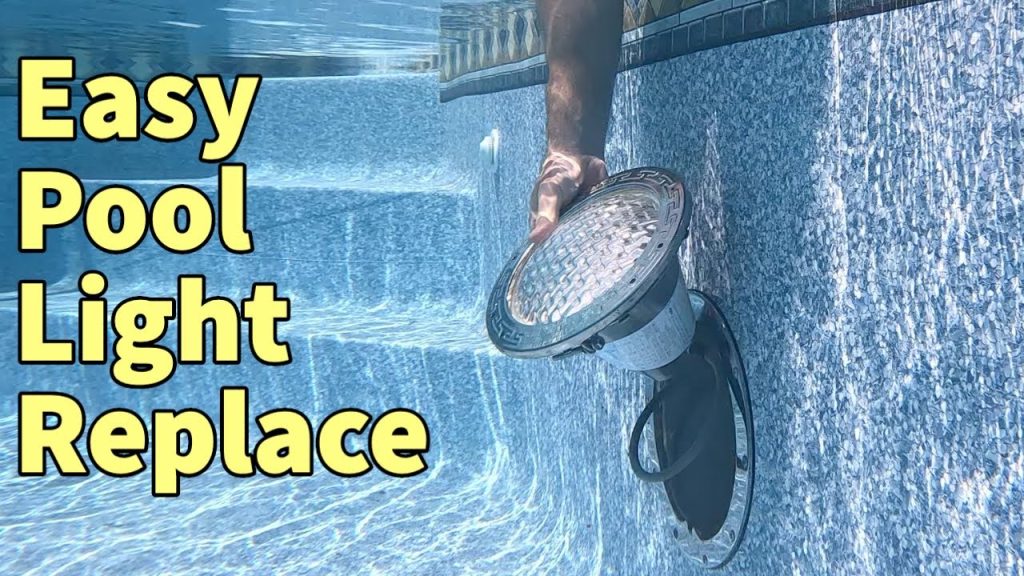Winterizing your swimming pool is essential. It protects your investment and ensures a smooth reopening in spring.
As the cold weather approaches, preparing your pool for winter becomes crucial. Proper winterization prevents damage from freezing temperatures and keeps the water clean for the next season. This process involves several steps, from cleaning and balancing the water to covering the pool securely.
Whether you’re a new pool owner or have years of experience, knowing the right techniques can save you time and money. In this guide, we will walk you through the necessary steps to winterize your swimming pool, ensuring it’s ready to face the winter months. Let’s dive into the details and keep your pool in top shape!
Preparing The Pool Area
Preparing the pool area is a critical step in winterizing your swimming pool. Ensuring the surrounding area is clean and organized helps protect your pool during the cold months. Follow these easy steps to get your pool area ready for winter.
Clear Debris
First, remove all leaves, twigs, and other debris from the pool area. This prevents them from blowing into the pool. Use a leaf blower or a rake to clear the area quickly. Pay special attention to corners and edges where debris can accumulate. Keeping the area clean reduces the risk of contamination.
Store Pool Accessories
Next, gather all pool accessories and store them properly. This includes pool toys, floats, and cleaning tools. Make sure to clean and dry them before storage. Use a shed, garage, or storage box to keep them safe from the elements. Proper storage prolongs the life of your pool accessories.

Credit: www.youtube.com
Balancing Pool Chemistry
Balancing the chemistry of your pool is crucial. It ensures the water remains clear and safe during winter. Proper balance helps prevent algae growth and damage to the pool surface. Follow these steps to keep your pool chemistry in check.
Test Water Levels
Start by testing your pool’s water levels. Use a reliable test kit or take a sample to a pool store. Check for pH, alkalinity, and calcium hardness. These levels must be balanced before closing the pool. Accurate testing is essential for good results.
Adjust Ph And Alkalinity
Adjust the pH level to between 7.2 and 7.6. This range is ideal for winter. If the pH is too high, use a pH reducer. If it is too low, add a pH increaser. Next, check the alkalinity. The ideal range is 80 to 120 ppm. Use an alkalinity increaser or decreaser as needed. Proper pH and alkalinity protect your pool surfaces.
Cleaning The Pool
Preparing your swimming pool for winter involves several important steps. One of the most critical tasks is cleaning the pool. A clean pool will prevent damage and make reopening easier. Let’s dive into the steps for cleaning the pool.
Skim Surface
First, use a skimmer to remove leaves and debris from the surface. This step keeps the pool clear and prevents clogging. Make sure to skim daily until you close the pool. It’s simple but essential for a clean pool.
Vacuum The Pool
Next, vacuum the pool to remove dirt and particles from the bottom. Use a pool vacuum for this task. Move the vacuum slowly to ensure you pick up all debris. Don’t forget the corners and steps. Vacuuming keeps the pool spotless and prevents stains.
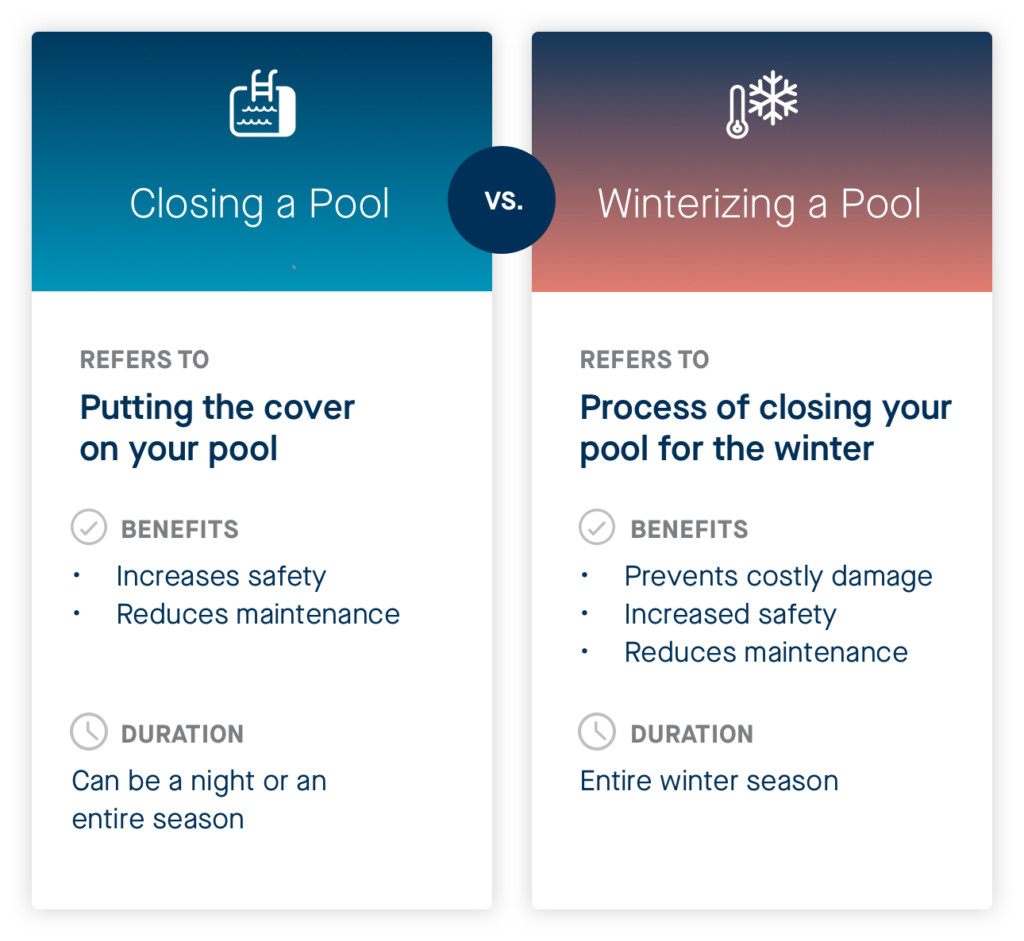
Credit: www.lathampool.com
Lowering Water Level
Preparing your swimming pool for winter is essential. One of the critical steps is lowering the water level. This helps prevent damage from freezing water. Follow these steps to ensure your pool is ready for the cold months.
Drain Excess Water
First, you need to drain excess water from the pool. Use a submersible pump or a siphon hose. Lower the water level to below the skimmer. This prevents water from entering the skimmer and freezing.
Be careful while draining. It’s important not to rush this process. Draining too much water can cause problems. Ensure the water level is about 4-6 inches below the skimmer.
Avoid Over-draining
It’s crucial to avoid over-draining your pool. If you drain too much water, it can damage the pool liner. This is especially important for vinyl-lined pools.
Check the manufacturer’s guidelines for the correct water level. Over-draining can also lead to structural issues. Keeping the right water level helps maintain the pool’s integrity.
By following these steps, you ensure your pool is well-prepared for winter.
Protecting Pool Equipment
Winter can be harsh on your pool equipment. Proper protection ensures your pool runs smoothly next season. Follow these steps to safeguard your pool equipment during winter.
Turn Off Pump
First, turn off the pool pump. This prevents damage from freezing temperatures. Locate the breaker switch in your electrical panel. Flip the switch to the “off” position. Ensure the pump is completely off before proceeding to the next steps.
Remove And Store Filters
Next, remove and store the filters. This helps maintain their longevity. Follow these steps:
- Turn off the filter system.
- Disconnect the filter from the pump.
- Carefully remove the filter.
- Rinse the filter with clean water.
- Allow it to dry completely.
- Store the filter in a dry, safe place.
Properly storing your filters prevents mold and damage. Use a storage area free from moisture and pests.
These simple steps ensure your pool equipment remains in good condition throughout the winter. Proper maintenance now saves you time and money in the future.
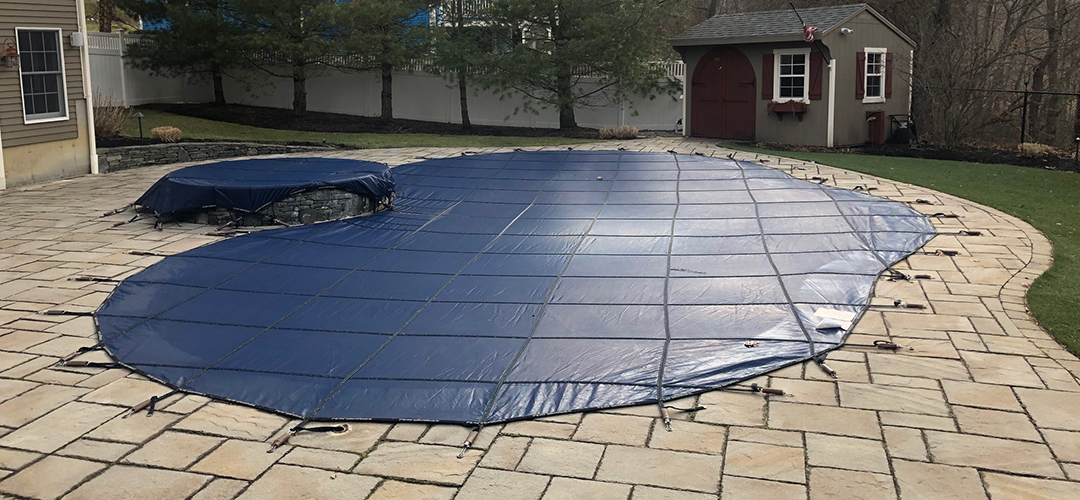
Credit: www.swimmingpool.com
Adding Winter Chemicals
Adding winter chemicals to your swimming pool is crucial for maintaining water quality during the colder months. Proper chemical treatment prevents algae growth, keeps the water clear, and ensures an easier pool opening in the spring.
Algaecide Application
Applying an algaecide helps keep algae at bay during winter. Algae thrive in stagnant water, and without the right chemicals, they can grow even in cold weather.
- Choose a high-quality algaecide designed for winter use.
- Read the manufacturer’s instructions for the correct dosage.
- Distribute the algaecide evenly around the pool.
Algaecides usually come in liquid form and are easy to apply. Be sure to circulate the pool water for at least 24 hours after adding the algaecide. This ensures the chemical spreads evenly.
Use Pool Enzymes
Pool enzymes break down organic matter in the water. These enzymes help keep your pool clean by digesting oils, lotions, and other debris.
- Purchase a pool enzyme product suitable for winterizing.
- Follow the instructions for the correct amount to add.
- Distribute the enzymes around the pool.
Using pool enzymes reduces the workload on your pool’s filtration system. This helps maintain clear water throughout the winter months. It also makes the spring cleaning process much easier.
| Task | Product | Dosage |
|---|---|---|
| Algaecide Application | Winter Algaecide | Follow Manufacturer’s Instructions |
| Use Pool Enzymes | Winter Pool Enzymes | Follow Manufacturer’s Instructions |
Covering The Pool
Winterizing your pool is crucial to keep it clean and protected during the cold months. One of the key steps is covering the pool. This prevents debris, leaves, and snow from entering the water. It also helps in maintaining the pool’s chemical balance. Let’s explore how to choose and secure the right cover for your pool.
Choose The Right Cover
Choosing the right cover is essential for effective pool protection. There are different types of covers, each serving specific needs. Here’s a quick look:
| Cover Type | Benefits |
|---|---|
| Solid Covers | Keep out debris and sunlight. Reduce algae growth. |
| Mesh Covers | Allow water to drain. Easier to manage. |
| Safety Covers | Prevent accidents. Durable and strong. |
Secure The Cover
Securing the cover ensures it stays in place throughout winter. Follow these steps to properly secure your pool cover:
- Clean the Pool: Remove leaves and debris.
- Install Cover: Spread the cover over the pool evenly.
- Anchor the Cover: Use water bags or anchors to hold the cover.
- Check Regularly: Inspect the cover periodically to ensure it remains secure.
By following these steps, you can protect your pool from winter damage. Remember, choosing and securing the right cover is crucial for your pool’s longevity.
Final Checks
Winterizing your pool is crucial to protect it during the cold months. After you’ve completed most of the winterization steps, it’s time for the final checks. These checks ensure everything is in order before you close the pool for the season.
Inspect Pool Area
Walk around the pool and look for any signs of damage. Examine the pool deck, fencing, and surrounding areas. Ensure there are no cracks or loose tiles. These issues can worsen in the winter.
Check the pool cover for any tears or weak spots. A damaged cover won’t protect the pool effectively. Replace it if needed.
Ensure Safety Measures
Safety is paramount, even when the pool is closed. Make sure all gates and fences are secure. They should be able to prevent children or animals from accessing the pool area.
Consider adding warning signs around the pool area. This will alert people that the pool is closed and not safe to use.
If you have pool alarms, test them to ensure they work correctly. This is an extra safety step that can provide peace of mind.
| Task | Action |
|---|---|
| Inspect Pool Area | Check for damage, repair if needed |
| Ensure Safety Measures | Secure gates, check alarms |
Completing these final checks helps ensure your pool remains in good condition throughout the winter. It also ensures safety for everyone around the pool area.
Frequently Asked Questions
When Should I Start Winterizing My Pool?
Start winterizing your pool before the first frost. This typically means late September or early October.
What Supplies Do I Need To Winterize My Pool?
You will need pool cover, water testing kit, chemicals, and a pool skimmer. These will help protect your pool during winter.
Do I Need To Lower The Water Level?
Yes, lower the water level below the skimmer. This prevents freezing damage to your pool’s plumbing and equipment.
Should I Add Chemicals Before Closing My Pool?
Yes, add winterizing chemicals to balance the water. This helps prevent algae growth and keeps the water clear.
Conclusion
Winterizing your swimming pool protects it from damage. Simple steps ensure your pool remains in good condition. Clean the pool. Balance the chemicals. Lower the water level. Drain the equipment. Cover the pool securely. These steps save money and time in the long run.
Follow this guide to keep your pool ready for next season. Happy swimming!

